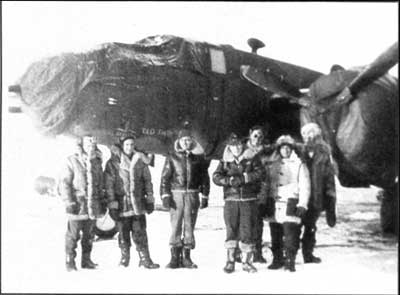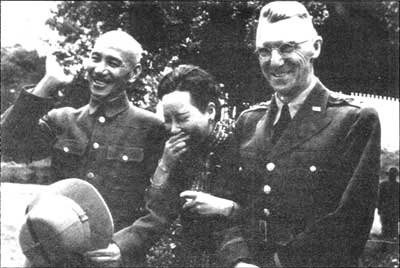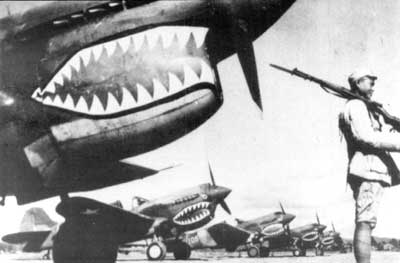| War in the Pacific: The First Year |
A Guide to
the War in the Pacific |
|
|
War in the Pacific: The Pacific Offensive Across the Pacific: China-Burma-India, Aleutians Vice Admiral Raymond A. Spruance, overall commander of the U.S. Fifth Fleet, was responsible for securing the Central Pacific. Initially, Admiral King ordered the Fifth Fleet to take the Marshall Islands, but intelligence reports suggested the Gilberts would be a more suitable target. Once Tarawa and Makin atolls were secured, these islands could serve as bases for air attacks on Japanese defenses in the Marshalls. Spruance constituted Task Force 50 to complete his assignment. A complement of six fleet carriers, five light carriers, six battleships, six cruisers, and 21 destroyers were deployed; 7,000 troops of the 27th Infantry Division would assault Makin on November 20, 1943. Makin was considered a pushover by American military strategists due to a light defense (800 Japanese troops and 500 laborers); but unexpectedly heavy resistance slowed the American assault. After four days Makin was secured. Tarawa was different. Betio, the primary island of Tarawa Atoll, is only two miles long and 600 yards wide, but it had the only airstrip in the islands and was vigorously defended by elite Japanese troops. Machine gun positions, concrete bunkers and pillboxes, mines, and 8-inch coastal gun emplacements (the guns brought to Betio from Singapore) foretold of formidable Japanese defenses for later fights in the Pacific. Admiral Keiji Shibasaki, the Japanese commander on Betio, boasted that a million men could not take Tarawa in a hundred years.
"Bloody Tarawa," as it soon was known, took 76 hours before the final "Banzai" rush of the Japanese signaled the end. Yet, Tarawa was a primer in what not to do during an amphibious assault landing. After Betio had been bombarded by naval fire for more than two hours, first wave Marines disembarked from their LVTs (Landing Vehicles, Tank) and made it ashore. Subsequent assaults by the flat-bottomed Higgins boats, however, were caught on the offshore reef in less than three feet of water 400 yards from the beachhead. As they waded to shore, hundreds were killed and wounded in a vicious crossfire. While the Americans inched inland, the 4,500 Japanese defenders slowly and defiantly gave way. Only 17 Japanese troops, of the original 4,500, made it out alive. American losses were staggering in the bitter fighting, and listed nearly 1,000 killed and almost 3,000 wounded of the 5,600 Marines who landed. The scenes of Tarawa shocked the Allies, but the experience served as an invaluable lesson for numerous other Allied island invasions that would take place during the next two years.
China-Burma-India and the Aleutians The "Forgotten War" in the China-Burma-India Theater was so dubbed because it lacked the priority the Southwest and Central Pacific campaigns received in Washington. Yet this region was important because of its geographic location. The Indian border represents the farthest westward expansion of Japan's Greater East Asia Co-Prosperity Sphere and the subcontinent, a British colony, contained needed resources for the Japanese military. China, for centuries, had been perpetually on the brink of war with Japan; north and central Burma is nestled between India and China. During the 1930s, China was invaded by Japan. By 1932, Manchuria, the breadbasket of the Middle Kingdom, was controlled by the Japanese, ruled by a puppet, and its name changed to Manchukuo. Early Japanese successes yielded them much of North China. Then it was Shanghai, Nanking and Canton, and in 1938 Hankow. Although the United States diplomatically responded in angry tones to the League of Nations' condemnation of Japan, little was accomplished. The rift between Japan and the United States grew ever wider as Japan assumed a dominant role in East Asian affairs. The Marco Polo bridge incident in July 1937 was followed by all-out war between Japan and China, made easier for the Japanese as a result of the Chinese civil war, which pitted Chiang Kai-shek's Kuomintang against Mao Tse-tung's Communist forces.
The United States was willing to aid Chiang's Nationalist forces in the 1930s, but would not provide the 500 aircraft the Chinese government requested. Instead, 100 durable P-40B Tomahawk fighters were made available. American volunteers, known as Flying Tigers, flew the Tomahawks and were commanded by retired Colonel Claire Chennault, who later helped organize the Chinese Air Force. (In early 1942, after the Pearl Harbor attack, the Flying Tigers expanded and became the Tenth Air Force.)
When the U.S. declared war on Japan on December 8, 1941, the Japanese were fighting both the Nationalists and Communist forces. The lifeline to the American-supported Nationalist forces in 1943 following the loss of key bases on the Burma Road was the Lido Road from India and across northern Burma to China. If the road was severed by the Japanese, Chinese resistance might collapse and Japan's warlords could transfer numerous divisions to other war zones. To ensure a proper flow of supplies and continued resistance by the Chinese, General Joseph H. "Vinegar Joe" Stilwell was sent to China as military advisor to Chiang. Stilwell and Chennault were not the only Western folklore heroes fighting in Asia. British General Orde Charles Wingate trained and employed several thousand British, Indian, and Burmese troops in jungle warfare against the Japanese. Wingate also had at his disposal Gurkhas from Nepal. Skilled at jungle warfare and known for their incredible endurance and tolerance to pain, the Gurkhas helped fight back the Japanese.
An American volunteer force, the 5307th Provisional Regiment, led by General Frank Merrill, were similar to Wingate's Chindits, and as famous as the Flying Tigers. Known as Merrill's Marauders, these skilled jungle fighters helped defeat the Japanese in the Hukawng and Mogaung Valleys in northern Burma. Attu and Kiska, in the Aleutian Islands, were seized by the Japanese in 1942 and became their northernmost conquests. Known as "The Thousand Mile War" (the approximate distance between American bases on the Alaskan coast and the westernmost Aleutian Islands), Attu and Kiska were deemed important by military strategists because of the proximity of Japanese troops and bases to the American mainland. In addition, they had important symbolic value because they were American territory. A joint Canadian and American force of 100,000 troops was deployed to rout the Japanese from America's northwesternmost territory. In May 1943, after nearly two weeks of savage fighting under almost impossible climatic conditions across some of the globe's most inhospitable terrain, the 2,000 Attu-based Japanese were annihilated by the American 7th Infantry Division. Japanese troops still held Kiska, but the activities in the Southwest and Central Pacific commanded higher priority for America's still limited but rapidly expanding amphibious capabilities. On July 28, 1943, four weeks after the landings on New Georgia and at New Guinea's Nassau Bay and two weeks after the invasion of Sicily, a fleet of Japanese destroyers and cruisers, under the cover of fog, evacuated the 5,000-man Kiska garrison without detection. Thirty-four thousand American and Canadian troops landed without resistance, and embarrassed military leaders had difficulty explaining how they had been hoodwinked.
|







